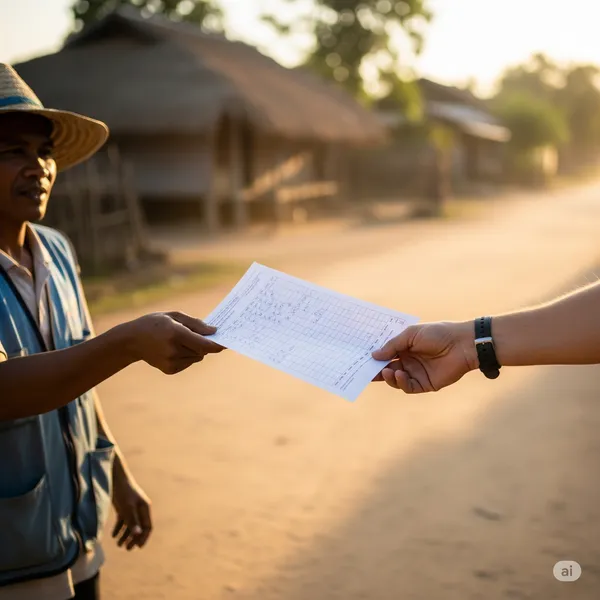Managing the TPM-Implementer Relationship
Published on: Mon May 20 2024 by Ivar Strand
Navigating the Partnership: Best Practices for Managing the TPM-Implementer Relationship
Introduction
The relationship between a Third-Party Monitor (TPM) and an Implementing Partner (IP) is a structured partnership, not merely a contractual arrangement. It brings together two organizations with different mandates, pressures, and perspectives, united by a common project. While this relationship is essential for accountability and learning, it holds inherent potential for friction if not managed with care.
The success of a monitoring exercise—and its ability to generate value beyond simple compliance—depends heavily on the professional management of this dynamic. At Abyrint, we have found that proactive engagement, governed by clear and mutually understood protocols, is essential. It is the foundation that allows the relationship to move from potential conflict to productive collaboration. This paper outlines best practices for managing the partnership across its natural lifecycle.
Phase 1: The Inception Phase – Establishing the Foundation
The groundwork for a smooth partnership is laid well before any data is collected. Rushing this phase often leads to preventable friction later. Key actions include:
- The Formal Kick-Off Meeting: More than a formality, this meeting is the first opportunity to build rapport and establish clarity. The TPM must clearly present its mandate from the client, its exact scope of work, and what the IP can expect from the process. This demystifies the TPM’s role from the outset.
- Defining Roles and Communication Channels: A simple but critical step is to map out the relationship. Who is the day-to-day contact point at the IP for logistical matters? Who at the TPM is their counterpart? To whom are issues escalated? A clear communication organogram prevents confusion and ensures information flows to the right people.
- Establishing a Data Sharing Agreement: To avoid ambiguity, a formal (though not necessarily legalistic) agreement should outline what data the IP will provide (e.g., activity schedules, beneficiary lists, progress reports) and the protocols for its secure handling and confidentiality. This creates predictability and protects both parties.
- Adopting the ‘No Surprises’ Principle: This is a fundamental ground rule for building trust. The TPM should commit to communicating any significant negative findings or major concerns directly and informally to IP management as soon as they are verified. This allows the IP to understand and begin addressing an issue before it appears for the first time in a formal report.
Phase 2: The Implementation Phase – Protocols for Interaction
Once monitoring activities begin, consistent and predictable communication is paramount. The focus should be on making interactions routine and transparent.
- Coordinating Fieldwork: Clear protocols should govern field activities. This includes agreeing on the notice period for site visits (where security and methodology permit), the process for introductions to local stakeholders, and joint responsibility for ensuring the safety of all staff.
- Maintaining Regular Check-ins: Brief, scheduled weekly calls or meetings between TPM and IP counterparts are invaluable. These should be used to provide operational updates, flag logistical challenges, and share high-level, preliminary feedback. Routine communication normalizes the interaction and prevents it from becoming solely an “event” when problems arise.
- Ensuring Methodological Transparency: The TPM should be open about its verification methods. Explaining the process for respondent selection, how back-checks are conducted, or how direct observations are recorded reduces suspicion and helps the IP understand the basis for any future findings.
Phase 3: The Reporting Phase – Managing Feedback and Disagreement
This is often the most sensitive phase of the engagement. A structured process for handling feedback and resolving disputes is not optional; it is essential for professional integrity.
- Review of Draft Findings for Factual Accuracy: Before a report is finalized, the IP should be given the opportunity to review relevant sections. The purpose of this step is explicitly for correcting factual errors or providing critical context that may have been missed. This is not a negotiation of findings, but a quality control measure that enhances the accuracy of the final product.
- A Formal Mechanism for Conflict Resolution: If an IP fundamentally disagrees with a verified finding, there must be a pre-agreed process to manage the dispute constructively. A best-practice model involves three steps:
- The IP submits its disagreement in writing, providing any countervailing evidence.
- The TPM reviews the evidence, either amending the finding or maintaining its position, providing a clear written rationale for its decision.
- If disagreement persists, the final report transparently includes the original finding, a summary of the IP’s formal objection, and the TPM’s concluding rationale. This ensures the donor has a full and unbiased view of the issue.
Conclusion
A well-managed TPM-implementer relationship does not mean the absence of disagreement. In complex operating environments, differing perspectives are inevitable. A successful partnership is one that has a predictable, transparent, and professional process for navigating those disagreements when they arise. By investing in clear protocols and consistent communication from the very beginning, the potential for adversarial dynamics can be transformed into a shared commitment to project integrity and success. This relationship, like any critical asset, must be managed with foresight and discipline.



